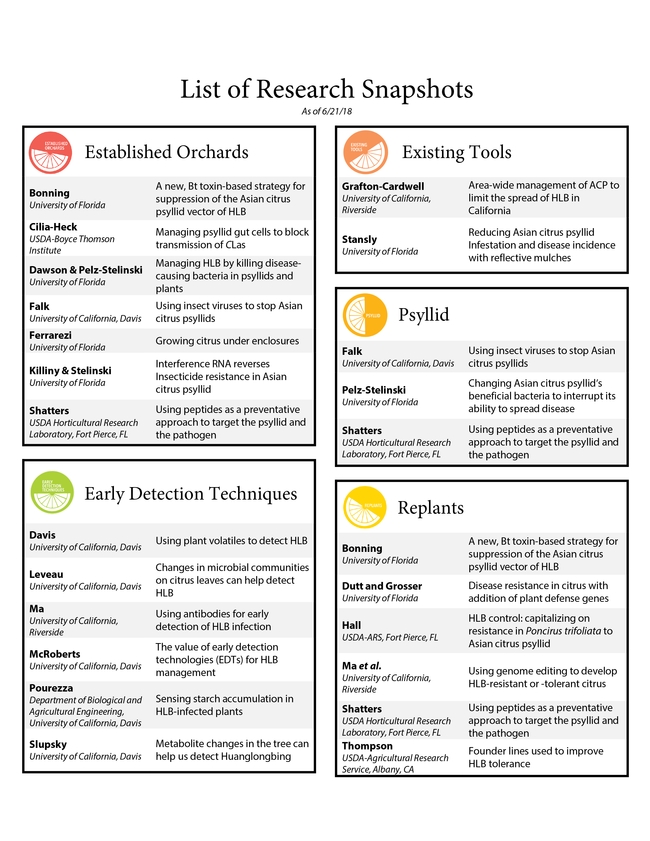Since our last blog post, we have been busy writing up various new Research Snapshots covering a variety of projects aimed to help in the fight against Huanglongbing (HLB) the bacterial disease that is devastating US citrus and the Asian citrus psyllid (ACP) that vectors it Examples of our latest Snapshots include:
- The value of early detection technologies (EDTs) for HLB
- Using peptides as a preventative approach to target the psyllid and the pathogen
- Growing citrus under enclosures
- Area-wide management of ACP to limit the spread of HLB in California
- HLB control: capitalization on resistance in Poncirus trifoliata to Asian citrus psyllid
We work directly with researchers to obtain information what they are doing, how they are doing it and the current status of their efforts. We then present their project in easy to understand terms to help you learn about various approaches to combatting the disease. Research Snapshots, available on the website, can be used as fact sheets at educational venues.
Snapshots are put into one of five categories, which are color-coded and interlinked to make use easier. New snapshots are being added each month.
- Early Detection Techniques: Methods to detect HLB disease early in the infection process
- Established Orchards: Tactics applied to established orchards to protect against HLB
- Existing Tools: Existing tools for managing the psyllid and the disease
- Psyllid: Methods to affect the psyllid so that it can not spread to HLB
- Replants: Long-term tactics for HLB protection, but require replanting citrus
You can see at a glance which projects have been highlighted in a list posted on the Research Snapshot webpage
